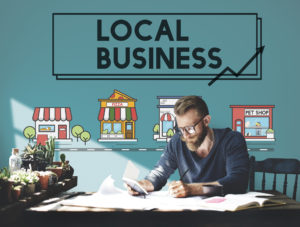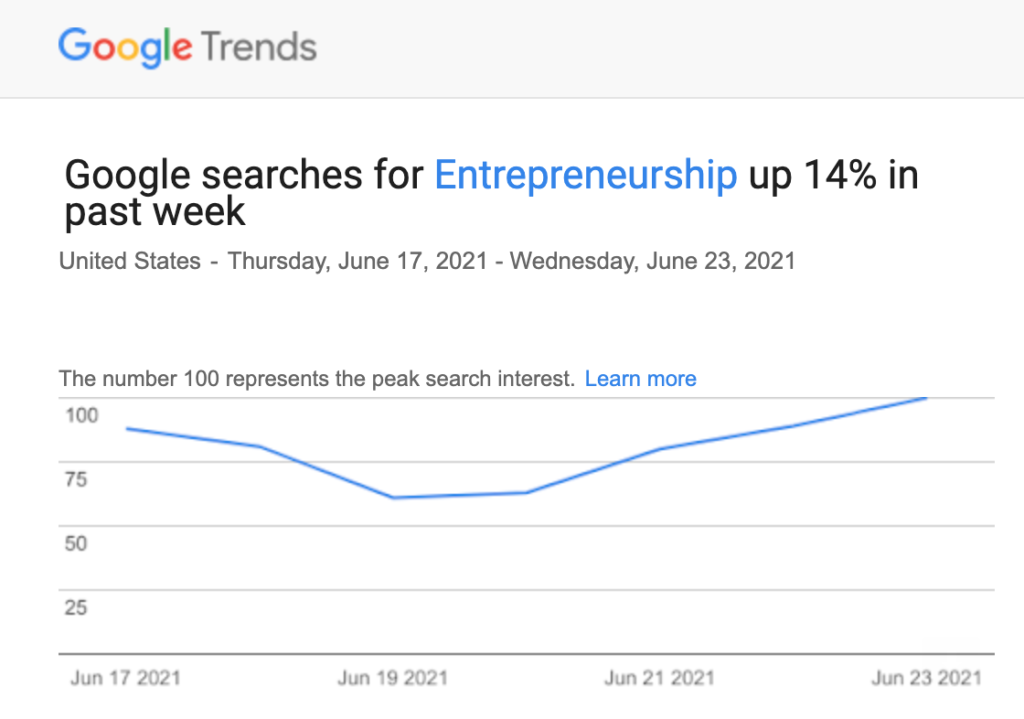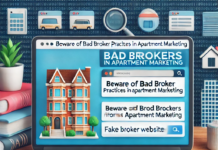Running a business is hard. From managing inventory, employees and other costs to worrying about customer satisfaction, creating awareness and generating revenue, the headaches are endless. For anyone interested in starting a local business or individuals that are successful business owners, the calculus gets even more difficult.
Why?
There is no such thing as a local business anymore!
Everyone, everywhere has access to a global marketplace. In particular, the pandemic impacted brick-and-mortar retail establishments as the drop in foot traffic severely impacted sales. Although various small business grant programs were created to help buffer the revenue declines, the shift in buying behaviors will have a long term impact on retail companies.
The shift to e-commerce as the primary retail buying option started pre-pandemic, but really turned the corner as in-person activities declined in 2020. Now, more and more consumers start purchasing decisions online and think about the local retail company as a secondary option.
Along those lines, Axios noted the bleak outlook of local businesses.
“Owners of independent brick-and-mortar businesses have a bleak outlook of the competitive threat posed by online shopping. A new survey of local U.S. retailers published by Shopify today shows that 82% of respondents agree that major online marketplaces are making it more difficult to operate.”
Additionally, of those surveyed, almost 90% of local retail businesses acknowledged online retailers are direct competitors. Furthermore, of those 90%, almost 60% think they may need to close their shops in the next two years.
The State of E-Commerce on Local Businesses

Retail stores are closing around the country. From big brand stores in large cities to independent stores in small town, USA, every retail company faces a similar (and existential) challenge. The rise of e-commerce continues to encroach on the neighborhood storefront. For example, online retail sales grew to almost 20% in Q1 2021 (up 1% from Q1 2020 and 5% from Q1 2019). Additionally, experts anticipate online retail sales will grow another 13.5% in 2021 (against 2020), which would generate a market share around 20.5% of all retail sales.
The big winner in the e-commerce world is Amazon. A recent FTI Consulting survey noted around 60% of respondents primarily shop on Amazon. In another blow for local businesses, almost no survey respondents avoided Amazon to support local businesses. However, more than 60% of respondents did shop direct-to-consumer in 2020, which shows a glimmer of hope for independent brands to compete against Amazon.
Finally, in another data point that shows the shift to online retail is inevitable, less than 20% of respondents noted they missed in-store shopping. As a result, with sustained online retail sales growth over the last half-decade and 80% of shoppers not missing in-store shopping, the consumer mentality seems set. J.D Wichser, the leader of FTI Consulting’s retail and consumer products noted the shift.
“Consumers have embraced online shopping to a new extent. We do not foresee a drastic shift or reversal in these behaviors as the economy fully reopens.”
How Local Businesses Can Compete in a Global E-Commerce World
In an unexpected outcome, some pundits read the post-pandemic data and believe small and local businesses can turn into winners during the next phase of economic growth. For example, Google Trends shows elevated interest in entrepreneurship.

Felix Salmon dug into the data to understand the recent growth.
“It’s now much easier than it was in 2008 to start a small business selling goods or services online. By far the largest single sector of new business formation is “nonstore retailers,” who account for one of every three new businesses formed over the pandemic. They were helped by e-commerce platforms like Shopify and Stripe, founded in 2009.”
All of this begs the question, how can a local business compete in a global e-commerce world?
-
Embrace Technology
First and foremost, every business must embrace technology. After all, local businesses cannot compete in e-commerce if they don’t have an online presence.
Although not every local business is a retail operation, all companies should maintain an online presence. Even if existing customers and word of mouth drives all of your leads and you are busy until the next decade, an online presence ensures that you own your brand. Plus, it helps prevent a competitor from producing disparaging content that shows up on search inquiries into your brand.
However, for everyone else, creating an online presence is vital to sustained success. In the retail world, this definitely means considering an omni-channel approach. But, more importantly, the consumer experience starts online, so if people cannot find your brand and products, they will not purchase them (in-store or online). Understandably, technology skills and marketing budgets vary for everyone. But, avoiding online marketing is a mistake that local businesses cannot make.
Fortunately, technology solutions on the market offer some simple “out of the box” platforms that allow novice business owners to start their online marketing efforts. For example, e-commerce platforms like Shopify or web site builders like WordPress generally allow simple “drag and drop” templates that allow companies with a pretty easy way of starting a web site and selling products. Additionally, the leading e-commerce platforms allow your site to grow with your business.
“Regardless of your e-commerce strategy, as more and more online shopping occurs, every business must have a strategy. From traditional SEO and PPC to sharing authentic messages on social media, finding your next customer online will be the key to sustained success.”
-
Leverage Local Footprint
A new term in the retail industry is “buy online, pick up in-store” and this is one strategy that local businesses have a distinct advantage over pure e-commerce brands. Although direct to consumer (DTC) brands that have no physical location are a major part of the e-commerce market, they are not in your neighborhood. Plus, at various times, we simply want or need something today. Consumers likely start their search online, but want a merchant that can sell them something today! As a result, big brands, such as Best Buy or Walmart promote “buy online, pick up in-store” and any local business can mirror this approach.
Additionally, as the economy opens up in the post-pandemic world, consumers want something, anything with personal connections. So, as a local business, simply lean into this concept and consider in-store events. An easy example is a book reading event at an independent bookstore, which attracts consumers and reminds residents that your store is open and a great shopping option. Any retail establishment can hire a local musician and host a “welcome back” event or series of events in 2021 to create an inviting experience. Paired with some social promotion and business owners have a low cost marketing option to generate some in-store traffic. But more importantly, events allow the community to keep your brand top of mind.
Finally, known as the last mile, the physical delivery of products remains an issue for DTC brands and even Amazon. However, physical location is an advantage for a local business (providing residents remember your store).
“In some cases, businesses are using their stores as last-mile delivery solutions to complement their e-commerce strategy — fulfilling online orders while providing a local presence.”
-
Remain Authentic
The world is complicated. As a local retail business competing in the e-commerce world turns every corner of the country (and globe) into a potential competitor. Naturally, the increased competition puts some stress on every business owner. Optimists will think about the increased opportunity. Conversely, pessimists will think about the challenges to capture that opportunity. Fortunately, local businesses can compete.
How?
One of the ways to stand out from the crowded retail marketplace is simplicity. Remaining authentic to the vision when your brand and store initially opened really works to capture the attention of new customers. From content marketing and local SEO activities to managing your social media presence, remaining authentic shouts through the noise and allows brands to find their core audience. Authenticity cannot be faked. Additionally, authenticity as a core pillar crosses through multiple marketing niches.
Reviews
For example, consumers trust reviews when looking at new brands and companies. So, leverage your local SEO playbook to generate lots of reviews from your core audience that frequent your store.
“Reviews demonstrate trust and credibility. In a world filled with fake news and deep fakes, customers increasingly struggle to trust things online. However, leading review platforms, such as Google and Facebook require real identities to share reviews. As a result, authentic reviews help improve SEO results!”
Related, knowing your customers presents an advantage compared to DTC companies seeking reviews. You know your customers and can ask for reviews from your best clients. Plus, although you do your best, a bad review will happen from time to time. However, applying that same authentic and personal approach shows when responding to those reviews. Local businesses can engage in-person vs DTC companies that solely rely on virtual communication.
Content Marketing
Another core component of demonstrating an authentic voice is content marketing. So, what exactly is content marketing?
“Content marketing relates to creating and distributing information (i.e., videos, blogs, white papers, infographics, etc.) aimed at the core interests of a specific audience.”
Content marketing works by engaging potential customers through building brand awareness. Effective content marketing strategy plays the long game because it builds a relationship with potential customers. And relationships need trust to nurture. Ultimately, marketers leverage content strategies to improve their business growth, such as:
- Boosting Sales.
- Attracting Committed & Loyal Customers.
- Developing & Deepening Reputation.
- Decreasing Marketing Costs.
Social Media
Social media offers everyone, including businesses, with a lot of pros and cons. To start, effective social media activities require a “pay to play” mindset. The underlying tech platforms (i.e., Facebook and Instagram) limit organic reach. As a result, in order to reach a large audience, then paid posts and social campaigns must be utilized. Fortunately, a little goes a long way and the tools offered to reach the right audience are effective.
For reference, the core customers of social media companies are small and mid size businesses (SMEs), which means they constantly offer tools to help you reach qualified customers. Of course, you’ll need to pay to find them, but the tools are easy to use and helpful in growing your tribe.
Additionally, social media is highly competitive. However, remaining authentic in your messaging continues to work. Leveraging authentic content and communication works in SEO and social media.
Successful social media campaigns rely on its humble beginnings – engagement! Any successful marketing activity taps into the same things that resonate within the story of any brand. To cut through the noise, focus on sharing things that truly demonstrate the vision and values that make your local business special!
- Behind the Scenes Images of the Store
- New Products
- Customer Stories about Brand
- Store Updates and Local Events
“One of the tried and true ways to engage customers via social media remains authenticity. In a noisy world, providing personal messages continues to drive customer loyalty and support. As one of the lasting marketing trends of the last few years, companies that remain authentic, while evolving with societal changes continue to gain engagement.”
-
Increase SEO/SEM Cohesion
Generally, the bigger the brand and budget, the better chances a company has to succeed. This is true when looking for supplies to fill inventory, along with securing access to capital to grow a company. It is true in marketing as well, but the more money a company has to throw at a problem, doesn’t mean it will work. In particular, although big brands have big budgets, they also have a lot of bloat. Typically, in-house marketing teams work with multiple agencies or vendors on various activities. Frequently, a large company has a paid search specialist, an SEO specialist and a social media specialist that executes the concepts from the in-house team. Or, these vendors share insights for review, but they are unique to their niche.
Local Business Can Leverage Their Size
Local businesses are small and nimble. There is no bloat. In fact, there are likely a few people that wear too many hats and need some help. In the digital marketing world, this is a huge advantage.
Why?
There are no silos online. Everything works together. A local business has one marketing manager (if that) to run social and paid search, while trying to figure out SEO. Although it seems counterintuitive, one person overseeing all channels (and executing on them) aligns all of your online marketing activities. The ability to increase the cohesion of the major digital marketing initiatives (SEM, SEO and social) presents a huge opportunity to win in the crowded online retail world.
For example, if you have a summer sale, then you need promos. But, you also need a landing page and likely some paid social to generate more awareness. With multiple different vendors, then brand likely see subtle differences in voice. Plus, the more hands mean the potential to provide incorrect information. Additionally, the social media director likely oversee the social media vendor. Conversely, the paid search director likely sees the SEM consultant. So, simply human tendency likely mixes up a few things. Plus, since it is a sale, nobody will tell the SEO team.
However, with some cohesion, the SEM and SEO teams can work together to create a custom landing page that pulls high value keywords into the ad copy, but also the landing page. Not only will customers find the sale, but you’ll receive a better quality score, so SEM will pay less per click. Additionally, the SEO team can create a custom story around a specific sale item that can be used to share the sale (and story behind the sale) on social. Cohesion allows for each member of the “marketing boat” to row together.
Local Businesses Lean Into Authenticity
Due to bloat, big brands likely do not have this cohesion. But as a local business, you do and you should use it to your advantage! Of course, all of the landing page and blog content will remain in your authentic voice! Plus, add some high value keywords that resonate with your audience as well.
Working together, any local business can compete against the e-commerce giants by staying informed and utilizing their size to stay nimble and quick to take advantage of all opportunities!





